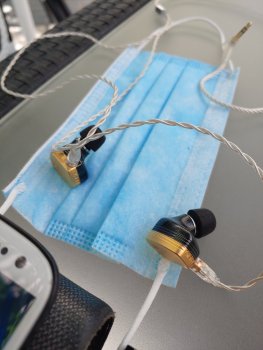Most of Beats' or Apple's recent audio products seem to adhere rather well to the various frequency response curves that Sean Olive's research at Harman tends to demonstrate are favoured by most consumers (look up Harman curves on the web). Here's Rting's measurements (their own targets are a
slight modification relative to Harman's targets) :
https://www.rtings.com/headphones/graph#1626/4011/1625
So I'm quite hopeful that Apple's (or Beats') upcoming over-ear headphones won't stray too far off these targets and will be decently well tuned.
That's very much unlike most over-ear or on-ear ANC BT headphones on the market today, none of which I've truly enjoyed so far. They all have a bloated bass response or significant and wild peaks and dips in the upper mids / lower trebles (Here's the B&W PX7, a total mess :
https://www.rtings.com/headphones/graph#1619/4011), none of which can be effectively solved by the built in EQ if available given its limitations.
What I'd love to see is the introduction of sufficiently high resolution sensors to make a rough 3D map of the listener's ear (think Face ID but for your ears) and adjust the HP's frequency response to tailor that listener's specific ear shape (as our ears have a different shape they modify the frequency response depending on the sound source location differently). This could be used in combination with the user's Face ID data to create somewhat convincing personalised HRTF profiles. That could possibly help making spatial audio a lot more convincing than with generic HRTF profiles (I'm not expecting it to be convincing with the AirPods Pro).
That being said most of Apple's most detailed patents propose using lower resolution capacitance sensors for ergonomics reasons to detect left vs. right ear and the ear's orientation, so my guess is that the upcoming over-ear headphones will use sensors only for operational qualities and we'll have to wait for another or a few other generations to have higher resolution sensors for personalised sound quality enhancements.
If the HP can detect left vs. right ear and can be put on in both orientations this has a very profound impact on design as they will have to be mostly symmetrical, not just on the left / right axis, but also front / back, unlike most headphones on the market today. This may have posed an additional challenge in regard to SQ (no angled drivers and front/back asymmetrical ear cups), operational qualities, ergonomics / comfort, etc.
I would also expect Apple to propose something a bit more clever than a plain port for charging purposes.
And for the earpads to be stupidly glued and not user-replaceable, because, well... Apple / Beats

.


